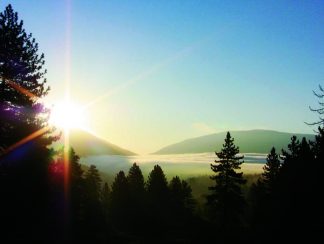By Bryant Baker, Los Padres ForestWatch
Los Padres ForestWatch was finally able to clarify the raw tree-stand data that the U.S. Forest Service sent us some months ago. This allowed us to conduct our own “trees per acre” analysis of the data. We have sent forest service officials a letter explaining our results.
Briefly, the forest service points to a scientific paper from 1995 by Richard Minnich and others to establish a historical baseline for trees per acre in Southern California mixed-conifer forests, including the current [Cuddy Valley] project areas.
That paper suggests that the historical trees per acre was about 93. This number is essentially what they use to develop their argument that there are too many trees in the project areas. However, the authors of that paper only considered trees above a certain size and conifers—excluding piñon pine—when coming up with that number.
They did not include non-conifers, saplings/seedlings or piñon pines.
The forest service apparently included all of these in their analysis, creating a false comparison to the historical data.
When we use that same methodology, the forest service’s tree stand data reveals that there are only about 83 trees per acre, on average, across both the Cuddy Valley and Tecuya Ridge project areas combined.
This is actually fewer trees per acre than there were historically, which is corroborated by our analysis of the separate basal area data the forest service sent us earlier this year.
Even the density of our piñon pine stands is at the lower end of the normal range historically.
Bryant Baker is Conservation Director for Los Padres ForestWatch
This is part of the January 4, 2019 online edition of The Mountain Enterprise.
Have an opinion on this matter? We'd like to hear from you.



